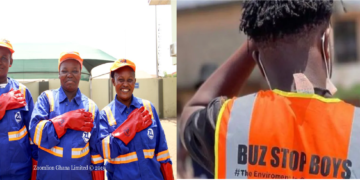Mobile telecommunication companies have spent more than Gh¢ 80million over the last three years to repair fibre-optic cables that were damaged through various activities, the Ghana Telecoms Chamber has reported.
The number of fibre-cuts in the industry has seen an exponential increase – from 480 cuts in 2011 to 2,110 in 2013 – and the situation for the first half of 2014 does not look any better as operators have already suffered 1,304 cuts.
In the first half of the year, MTN, the largest mobile operator, recorded 436 cuts covering a total length of 4,336 kilometres.
The data for 2014 show that, on average, seven fibre cuts are recorded by operators every day; which could make it the worst year yet for telecom networks.
According to the chamber, network operators expended the over-Gh¢80m in either replacing cables – in instances when they were stolen or suffered substantial damage – or splicing (joining) them.
Telecom operators claim the machine used to join the two ends of a damaged cable costs US$100,000.
“Apart from the massive cost incurred by operators as a result of these destroyed infrastructure, there’s also the cost of lost revenue on the operators resulting mostly from the disruption in mobile connectivity,” said Derek Laryea, Research and Communication Manager of the chamber.
Operators say cuts to fibre-optic cables reduce network reliability and affect customer experience on the network, while increasing cost of operations.
The Corporate Communications Manager of MTN, Cynthia Lumor, recently told the B&FT that the unending incidence of cable cuts is a worrying trend that impedes the company’s ability to provide quality service to customers.
In recent times, road contractors have often been faulted for causing damage to telecoms underground infrastructure through their construction activities.
“Contractors are responsible for up to 75 percent of these cuts,” said Mr. Laryea.
About two years ago, the chamber moved to enlist the support of road contractors in order to correct the abnormality.
But despite the involvement of the Association of Road Contractors (ASROC), road agencies and National Security, the spate of cuts has not reduced.
The consensus reached between the chamber and these stakeholders was that operators will furnish the Ministry of Roads and Highways and other road agencies with a map of their underground infrastructure, while contractors are expected to use these maps and other advice to avoid the cables during excavation/ construction works.
But ASROC’s National Chairman, Joseph Ebo Hewton, said that telecom operators have not engaged them since they last met about two years ago.
“The last time we met, we insisted that they sponsor a training workshop where we would bring our members. This training was expected to help contractors identify cables and know how to handle them on site.
He however added that the operators are yet to organise the training programme.
“Nobody sets out to cut cables. If the person does not know, how do you expect him to handle it?” he said.
He said the cost of repairing a single cut would be more than enough to pay for a training programme in Accra, Takoradi and Kumasi.
Responding to the claims by the contractors, the chamber said it will by the end of this year, roll out an awareness-creation campaign on fibre-cuts that will involve all stakeholders, including members of ASROC.
















